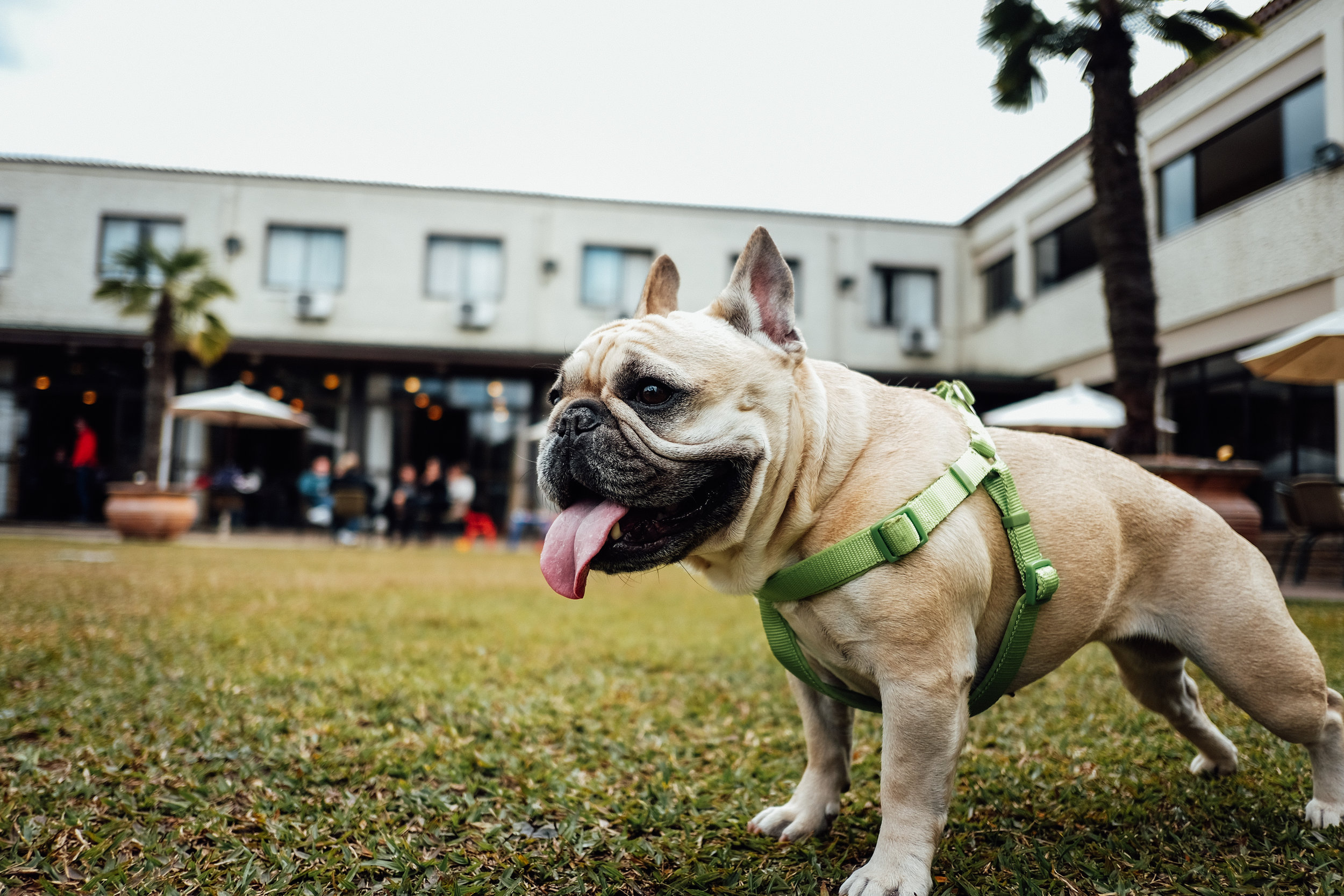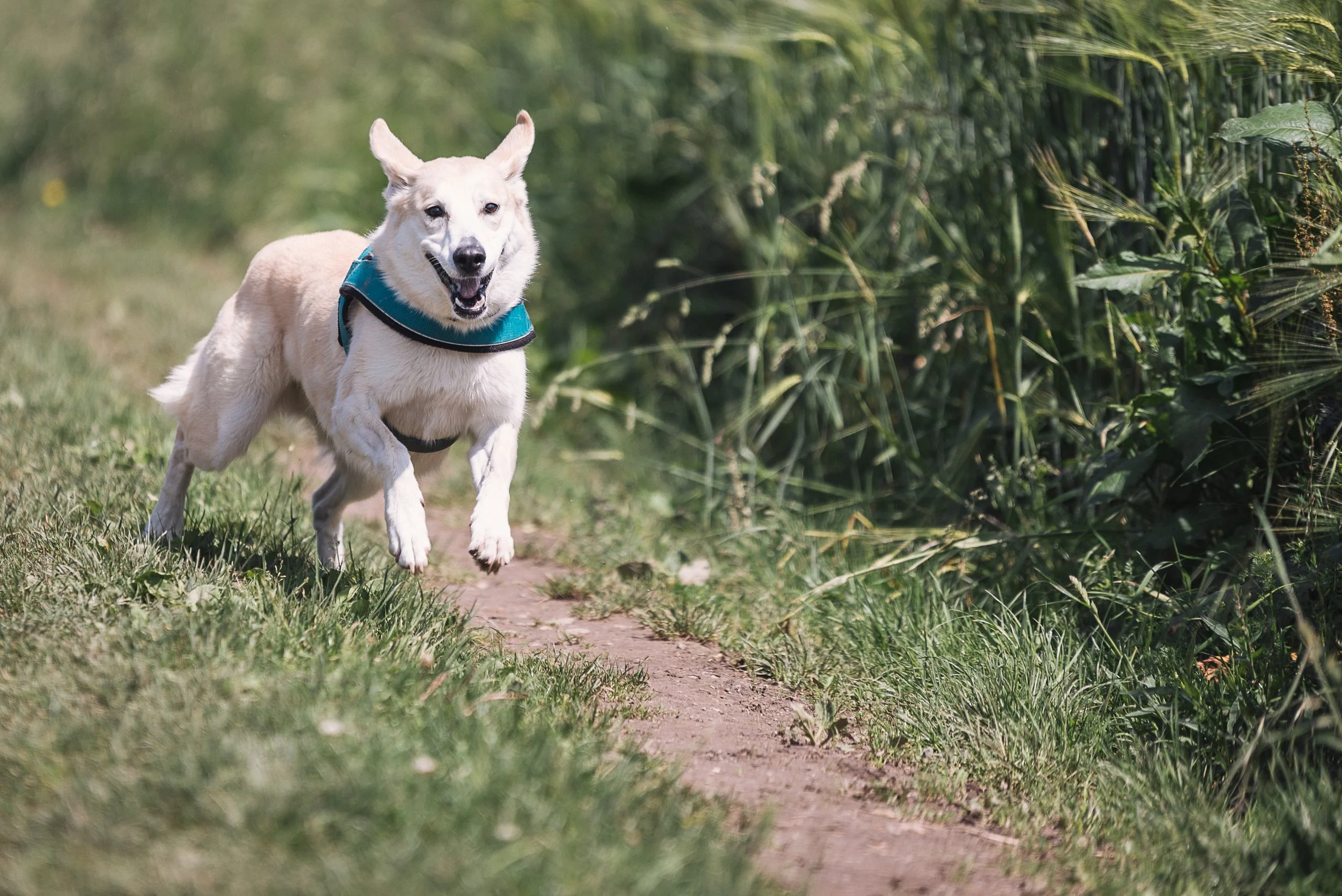What Equipment Should You Use To Walk Your Dog?
/Last week I wrote some tips for helping your dog walk politely on leash. I had some great questions come up including what kind of equipment one should use for walking, so this week I'm going to address that. I'll include things I DO recommend, things I DON'T recommend, and things that I'm on the fence about depending on the situation.
What you should use to walk your dog
Leashes:
- Nylon, leather, or chain can all be fine.
- The material should be one you and your dog are both comfortable with (small dogs with heavy chains are probably a "don't").
- Four to six feet in length.
I always recommend walking a dog on-leash. It's polite to the public who may be afraid of your loose dog, it protects against the possibility of them bolting into traffic or other dangerous places, and in many places, it's the law. A fixed length leash of four to six feet will allow your dog to have enough room to sniff and do their business. If you or your dog are especially short or tall, adjust accordingly (Shaq should probably walk a chihuahua on a teen-foot leash).
Collars:
- Flat collars can be of practically any material.
- Martingale collars have their place.
- Should follow the "two fingers" rule for best fit.
A collar is a convenient place for ID tags to hang. If the dog doesn't have a pulling problem, they can be okay for attaching the leash as well. Use caution when attaching a leash to a collar because if the dog does pull, you're risking damage to their trachea. Even if they don't pull hard, it can add up over time. Martingale (or no-slip) collars make a good backup to harnesses for escape-artists.
Harnesses:
- Should allow free range of motion of shoulders.
- Should put pressure on the sternum, not neck.
- Rear-connection is preferable.
A harness is the best thing to attach your leash to. The odds of injuring the dog are lowest, and when fitted properly are harder to slip out of. As I mentioned under the collar section, a martingale can be used as a backup if your dog is especially adept at slipping out of a harness while you train them not to. Front connection harnesses can help give a mechanical advantage for dogs that pull hard, but can also interfere with gait - possibly contributing to medical issues. The risks should be weighed against the benefits, I personally recommend them during the training process and then switching to rear-connect towards the end of the plan.
What you should not use to walk your dog
Leashes:
- Retractable leashes
- Long lines (leashes ten feet or longer)
- Wrong material or size for your dog
Heavy chain leashes on small breeds, or thin whispy leashes on large breeds, do no good to anyone and should be avoided. Retractable leashes and long lines have their place, but that isn't for typical walking. Retractable leashes have a few things that make them especially dangerous: the chord styles can cause pretty serious injuries; because the leash is inside the handle, it is difficult to see wear and tear until it's too late; the handles give a false sense of security because they seem easy to hold, but are actually more likely to slip out of your grip on a sudden pull. Long lines have their own set of risks including trip and tangle hazards. Both can be used responsibly, but neither can help a dog learn to walk politely near you. Furthermore, the constant tension of an unlocked retractable will go against your training, teaching the dog that a "tight" leash is normal.
Collars:
- Wrong size
- Shock, choke, or prong
If your collar is too big and your leash is attached, it does no good. If it's too small, you risk breaking it or injuring your dog. I wrote about training methods before. There's an idea that shock, choke, and prong collars don't hurt dogs. The simple answer is: if they didn't hurt, they wouldn't work. I've seen a few dogs that will pull hard against a choke chain or prong collar, so I'd agree that in those cases it doesn't hurt (or at least, doesn't hurt that dog enough to deter them from whatever they're pulling towards, or that the dog is confused and is pulling to try to escape the pain - either could be the case). However, it is impossible to argue from any knowledge of how behavior works and is affected that these devices can be effective at eliminating behavior without causing the dog pain. That just isn't how behavior science works.
Other things to consider
Face Harnesses. These work a little like reins on a horse, but dog neck muscles are nowhere near horse-neck strength. The idea is that they provide a mechanical advantage to the human when walking the dog, and they do. The reasons I feel they should be avoided unless absolutely necessary are: most dogs find them uncomfortable and require a considerable amount of conditioning (which is also true of many dogs and regular collars or harnesses, but fewer than with face harnesses in my experience); there is a serious risk of whiplash injury if used improperly. So I'm not willing to put these on the "don't" list, but I will recommend using them only under the guidance of a professional.
Muzzles. I wish there were less stigma against muzzles. If you have a dog that is less than fully comfortable in the world, a muzzle is appropriate. It also serves as a great deterrent for shy dogs - people are much less willing to come up and pet a dog wearing a muzzle. There are some dogs that should follow "muzzle in public" rules, but most don't need this. I do think that it's a good idea to train every dog to accept a muzzle and wear it comfortably. If they are in an accident or are injured, even the nicest dog could bite. Again, probably best to consult with a professional on this one.
Benjamin is the owner of Good Doggy Saratoga. You can follow him on Facebook.
If you liked this article, please like and share below. You can also subscribe to receive blog updates in your email.





